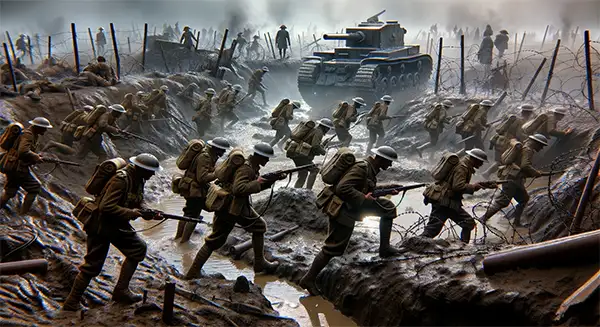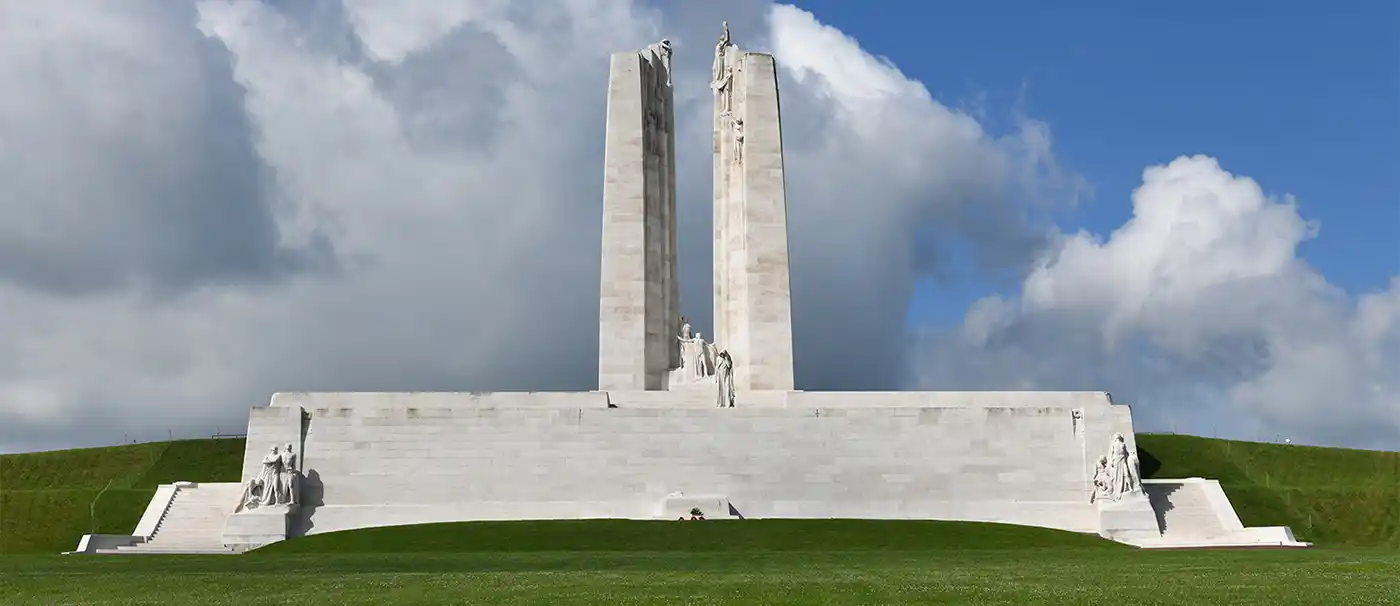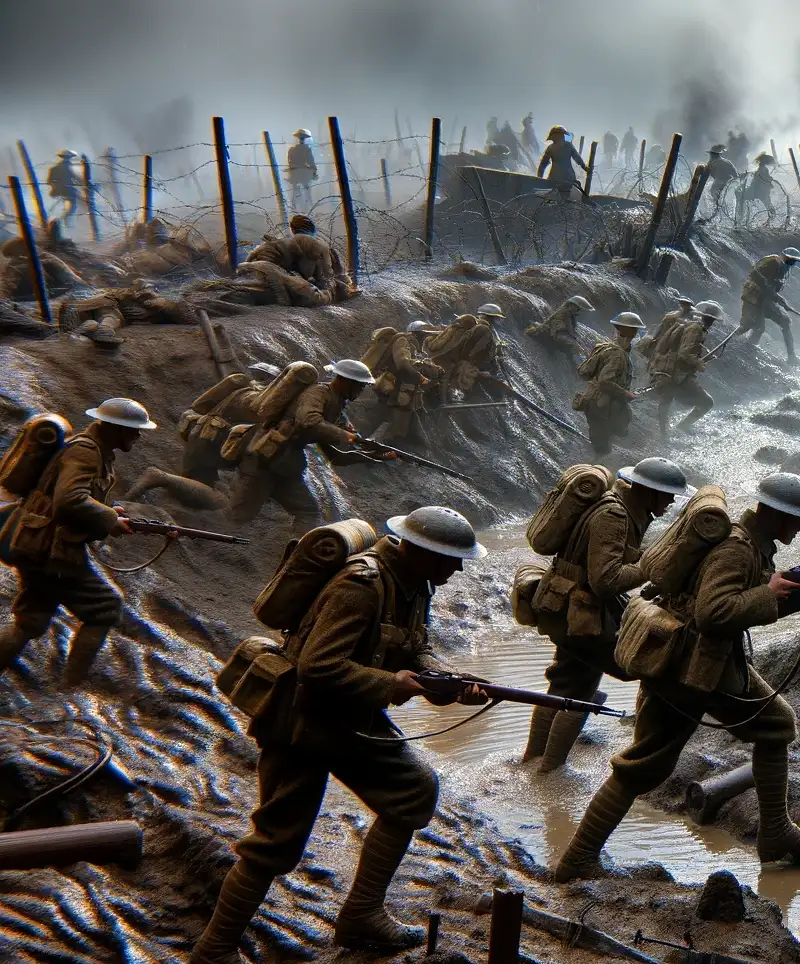A Symbol of Canadian National Pride and Remembrance
Each year on April 9th, Canada observes Vimy Ridge Day, a solemn occasion dedicated to commemorating the bravery and sacrifice of Canadian soldiers during the Battle of Vimy Ridge in World War I. This historic battle, fought from April 9 to April 12, 1917, marked a significant moment in Canadian military history, as it was the first time all four divisions of the Canadian Corps fought together in a coordinated assault. The victory at Vimy Ridge is often credited with fostering a sense of national unity and identity for Canada.
 National Significance
National Significance
Vimy Ridge holds a place of deep reverence in Canadian history, symbolizing not just military success but also the emergence of Canada as a united and independent force on the world stage. Prior to the battle, Canadian forces were often seen as an extension of the British army, but their strategic planning and execution at Vimy proved their capability as a formidable force. The triumph at Vimy Ridge is frequently regarded as a defining moment in Canada’s national consciousness, laying the groundwork for the country’s evolving independence from Britain.
Beyond the battlefield, the victory at Vimy Ridge also contributed to Canada’s growing autonomy in international affairs. The battle's success, coupled with the significant sacrifices made by Canadian troops, led to Canada earning a separate signature on the Treaty of Versailles in 1919, formally marking its place as an independent participant in global diplomacy. Today, Vimy Ridge serves as a lasting reminder of Canada’s strength, resilience, and unity, reinforcing the importance of honoring and remembering those who fought in the battle.
Additionally, the story of Vimy Ridge is woven into Canada's cultural identity, appearing in literature, art, and national symbols. The battle is often taught in schools, ensuring that future generations understand its importance. The respect for those who fought at Vimy is reflected in government policies that support veterans and historical preservation efforts, ensuring that their sacrifice is never forgotten.
Vimy Ridge Day Commemorations
Vimy Ridge Day is observed through a variety of commemorative activities across Canada and at the Vimy Memorial in France. Public ceremonies are held in major cities, featuring wreath-laying ceremonies, moments of silence, and speeches by government officials, veterans, and military representatives. Schools and community organizations often engage in educational programs, ensuring that younger generations understand the significance of the battle and its role in shaping Canadian history.
Many Canadians choose to honor the day in personal ways, visiting war memorials, wearing the Vimy pin, or learning about their family members’ contributions to the war effort. In recent years, virtual commemorations and social media campaigns have gained popularity, allowing people from all over the world to participate in remembering the courage and sacrifice of Canadian soldiers.
Internationally, Canadian embassies and consulates also hold special ceremonies, reinforcing the global recognition of the battle’s importance. These events serve as a reminder that the sacrifices made at Vimy Ridge were not just for Canada but for the broader fight for peace and freedom. By continuing to honor this day, Canadians ensure that the legacy of Vimy Ridge remains a vital part of the nation’s heritage.
In addition to official events, many museums and cultural institutions host exhibitions that explore the significance of Vimy Ridge. These exhibits often include personal artifacts, letters from soldiers, and historical analyses that offer deeper insight into the battle’s impact. This educational approach allows Canadians to connect with history in a more personal and meaningful way.

The Vimy Memorial
Standing atop the very ridge where Canadian forces secured their historic victory, the Vimy Memorial in France is one of Canada’s most revered monuments. Unveiled in 1936, the memorial serves as both a tribute to those who fought and a solemn reminder of the 11,285 Canadian soldiers who were killed in France during World War I and have no known grave. Designed by Canadian sculptor Walter Seymour Allward, the towering limestone structure features intricate carvings symbolizing themes of sacrifice, mourning, and the enduring quest for peace.
Beyond its architectural and artistic significance, the Vimy Memorial stands as a place of pilgrimage for Canadians and military historians alike. Each year, thousands visit the site to pay their respects, walk through the preserved trenches, and reflect on the extraordinary efforts of the Canadian Corps. The surrounding Vimy Memorial Park, maintained by Canada, also features battle-scarred landscapes, tunnels, and cemeteries that offer a poignant connection to the past.
The monument is not just a historical site but an enduring symbol of Canada’s commitment to remembrance. Its prominence in Canadian culture is reflected in its presence on the country’s currency and its role in state ceremonies. The Vimy Memorial continues to remind future generations of the courage, sacrifice, and unity that defined the Battle of Vimy Ridge, ensuring that the legacy of those who fought and fell will never be forgotten.
Interesting Facts
- The Vimy Memorial was one of the first war memorials to be constructed after World War I, taking 11 years to complete before its unveiling in 1936.
- More than 15,000 Canadian soldiers participated in the Battle of Vimy Ridge, with the majority being volunteers from across the country.
- The names of over 11,000 Canadian soldiers who died in France and have no known grave are inscribed on the Vimy Memorial.
- The battle marked the first time all four divisions of the Canadian Corps fought together, setting a precedent for future Canadian military engagements.
- The Canadian government designated the Vimy Memorial site and surrounding area as Canadian territory, making it one of the few pieces of foreign land owned by Canada.
- The famous 'creeping barrage' tactic, used at Vimy Ridge, revolutionized modern warfare and was later adapted in other battles during the war.
- Every year, Canadian students and cadets participate in programs that bring them to the Vimy Memorial to learn firsthand about Canada's military history.
By recognizing these facts, Canadians continue to appreciate the bravery, sacrifice, and strategic importance of Vimy Ridge in shaping their nation's history.
Please Share our Content






 National Significance
National Significance









 "Sláinte!" is a traditional Irish expression used as a toast, equivalent to "Cheers!" in English.
"Sláinte!" is a traditional Irish expression used as a toast, equivalent to "Cheers!" in English.